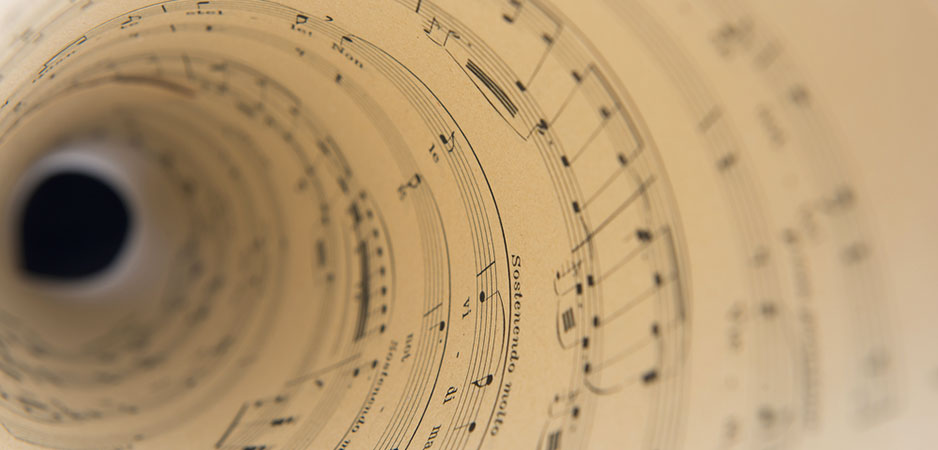According to Alex Ross in his book, “Wagnerism: Art and Politics in the Shadow of Music,” Richard Wagner was more than the composer who dominated German music in the second half of the 19th century. He became a towering cultural icon who transformed the way culturally influential people and even politicians thought about art and the values associated with it.
His influence wasn’t limited to the arts. His reputation had the misfortune of becoming tarnished by an association with Naziism. Wagner himself cannot be held responsible for the association with Adolf Hitler since the composer died six years before Hitler was born. But though Wagner’s anti-Semitism must have pleased Hitler, the Fuhrer admired the music for other reasons, more closely linked with its patriotic mythology. It is no coincidence that Wagner’s art belongs to an era that privileged aggressive racist nationalism in Europe.
Wagner was unquestionably an innovator. Any musician who listens to even random excerpts of his orchestral music and opera scores cannot but be impressed by the subtle complexity of his art. Thanks to his Promethean ambition, Wagner achieved the singular feat of both subverting the inspired individualism at the core of his century’s romantic tradition and fulfilling the romantics’ paradoxical ambition of formulating new principles for achieving collective domination.
Banking Takes the Fun Out of Spoofs
He rejected the social drama of the Italian masters of opera — Verdi, Rossini, Donizetti — who worked in a tradition perfected by Mozart. The Italian tradition used melody and recognizable harmonic structures as the structuring factors that permitted the expression of human pathos. Wagner’s sense of drama replaced social conflict with idealized quests aimed at reordering the world. These were the very forces driving European nationalism at the time.
Wagner clearly broke from recognized traditions and produced an art that was not just different, but in purely musical terms always rich with surprises. But was this what people expected from music? One famous ironic remark by a pragmatic 19th-century American sums up Wagner’s effect on the average person, even today. The humorist Bill Nye is credited with the remark, “Wagner’s music, I have been informed, is really much better than it sounds.”
Examining Wagner’s legacy across Western culture right up to modern times, Ross tends to give Wagner too much credit. Convinced that the composer was the agent who shaped the culture around him, he tends to neglect the evidence showing how the ambient culture shaped Wagner. At one point, he claims that in his opera, “Tristan und Isolde,” Wagner “set the course for an avant-garde art of dream logic, mental intoxication, formless form, limitless desire.” In other words, Ross attributes to Wagner the creation of some of the most salient features of the modern world.
Here is today’s 3D definition:
Formless form:
The ultimate attainment of aesthetic hyperreality, when an artist invents the means to create the illusion of form — an immaterial but recognizable component of all art — by annihilating the recognized principles of form.
Contextual Note
Wagner didn’t invent any of the four features Ross lists: dream logic, mental intoxication, formless form, limitless desire. William Blake did. Lord Byron did. So did Beethoven, Goethe and Henry Fuseli. Wagner assembled those existing trends and repackaged them into what are clearly musical monuments. In so doing, he concretized better than anyone else the major tendency of his age: worship of the monumental.
Wagner lived at a moment in history when Europeans were less intent on building monuments — as the Italians did with their architecture during the Renaissance — than on adulating anything that strove to be monumental, whether it was empire, opera or industry. Wagner himself was a monumentalist striver.
Western civilization didn’t wait for Wagner to begin fashioning and disseminating the four features Ross mentions. They were already embedded in broader cultural trends, including the new focus of the capitalist economy, habits of production and consumption, commodification, modes of entertainment and politics.
At one point, Ross quotes the academic Nicholas Vazsonyi: “Wagner’s special skill was the ability to preserve the artistic integrity of his towering works amidst the blaze of commodification to which he in the first place had subjected them.” Wagner tirelessly promoted the brand he had created, with a sense of mission similar to modern monopolists named Bill Gates, Mark Zuckerberg and Elon Musk.
But what about the four features he mentions? By formless form, Ross appears to mean the subversion of traditional forms. That could be called the grand illusion of modernism. No art can be totally formless, not even John Cage’s “4’33” of silence.” As Aristotle maintained, everything “is a compound of matter and form.”
At the same time, compelling art at any point in history challenges existing principles of form, but not to impose formlessness. The challenge can go in two directions. The first calls attention to a recognized form that has become lifeless, repetitive and easily duplicable through familiarity. The second consists of successfully exploiting an unfamiliar dimension that derived from existing formal principles. It transforms appearance by adding a new layer of meaning, making it more compelling.
The most deserving examples of transformation, rather than neutralizing form, enrich it. Bach did precisely that with both harmony and melody. So did Vivaldi, with a greater focus on rhythm. They and their contemporaries invented a language whose intricacy of formal principles made Mozart possible, a composer who never sought to undermine Bach’s system of formality. Mozart exploited the formal principles, subtly enriching multiple aspects of their stylistic expression.
When the legendary jazz saxophonist Charlie Parker took the familiar popular tune, Cherokee, and built his improvisation on harmonic extensions of its standard chords, he not only produced a fresh version of the tune, but he also changed the course of the history of jazz. He didn’t invent a new type of formality or cancel the old one. He extended and transformed the existing one. The challenge young musicians faced was to assimilate and successfully exploit the enriched formal principles that defined this new musical language.
Ross is nevertheless right to assert that the idea of “formless form” became a theme of modernist aesthetics, evident in James Joyce’s use of stream of consciousness and the discontinuity of thought developed in T.S. Eliot’s poems. But Joyce and Eliot, like Picasso and Braque, used the sense of confusion caused by the disruption of recognizable forms to exploit an even fuller range of forms inherited from their traditions. The critic Gilbert Seldes, speaking of Eliot’s “The Waste Land,” claimed that despite its appearing “remarkably disconnected and confused” a closer reading “reveals the hidden form of the work.” Successful artists always try to hide form. Only their imitators, hoping to exploit a trend, abandon it to make it truly formless.
Historical Note
The history of any culture can never be reduced to a simple logic of cause and effect or the tracing of influence from one thinker or artist to another. The real danger lies in isolating vague themes — such as the four that Alex Ross cites — and treating them as if they had some substantial meaning in any historical context. The idea of formless clearly has no meaning other than as a slogan. Dream logic didn’t require waiting for either Sigmund Freud or Richard Wagner. Midsummer night dreams have inspired artistic works throughout human history.
On the other hand, the other two features — mental intoxication and limitless desire — have effectively taken on new meaning in a post-Wagner world. They became the foundation of the industry that would drive the consumer society: advertising. Intoxication and the stimulation of limitless desire have provided the basis of the 20th-century economy, in conjunction with the 19th-century impulse toward nationalist imperialism.
The new composers of the 20th century — Stravinsky, Schoenberg, Berg, Webern, Satie and others — rejected the Wagnerian system. Hollywood, on the other hand, wholeheartedly embraced Wagnerian drama as the foundation of the emotional rhythms of its films. Though rarely attaining the sophistication of Wagner himself, the best movie scores reflect Wagner’s musical universe. More significantly, the dramatic rhythm of standard Hollywood films seems inspired by the sequences of false climaxes Wagner so expertly concatenated.
Apart from pompous Hollywood scores, the direct trace of Wagner’s influence on music has largely disappeared in the 21st century. But it unquestionably remains in advertising, commodification, monopolistic and whatever remains of nationalistic imperialism.
*[In the age of Oscar Wilde and Mark Twain, another American wit, the journalist Ambrose Bierce, produced a series of satirical definitions of commonly used terms, throwing light on their hidden meanings in real discourse. Bierce eventually collected and published them as a book, The Devil’s Dictionary, in 1911. We have shamelessly appropriated his title in the interest of continuing his wholesome pedagogical effort to enlighten generations of readers of the news. Read more of The Daily Devil’s Dictionary on Fair Observer.]
The views expressed in this article are the author’s own and do not necessarily reflect Fair Observer’s editorial policy.
Support Fair Observer
We rely on your support for our independence, diversity and quality.
For more than 10 years, Fair Observer has been free, fair and independent. No billionaire owns us, no advertisers control us. We are a reader-supported nonprofit. Unlike many other publications, we keep our content free for readers regardless of where they live or whether they can afford to pay. We have no paywalls and no ads.
In the post-truth era of fake news, echo chambers and filter bubbles, we publish a plurality of perspectives from around the world. Anyone can publish with us, but everyone goes through a rigorous editorial process. So, you get fact-checked, well-reasoned content instead of noise.
We publish 2,500+ voices from 90+ countries. We also conduct education and training programs
on subjects ranging from digital media and journalism to writing and critical thinking. This
doesn’t come cheap. Servers, editors, trainers and web developers cost
money.
Please consider supporting us on a regular basis as a recurring donor or a
sustaining member.
Will you support FO’s journalism?
We rely on your support for our independence, diversity and quality.






